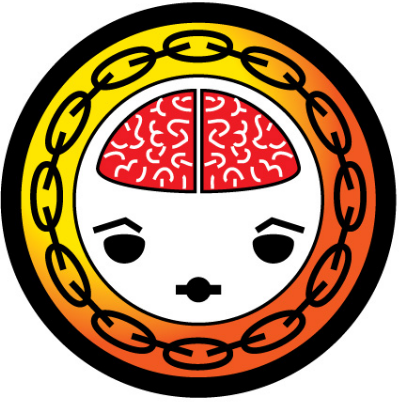
Greenfield. Clean slate. Starting fresh. Creating anew.
Brownfield Planning. Plowing old fields. Refining existing processes.
Supply chain planning, as we know it, does not serve the needs of the global multinational manufacturer. As companies moved from regional to global teams, supply chain planning was not redefined. With the evolution of technology, we are entering a new generation of planning using Native-AI Platforms, which offer us the opportunity to take a greenfield approach to planning and redefine the processes to be easier and more actionable. In this post, I encourage you to embrace the retronym Native-AI Supply Chain Planning.
What is a retronym? Let’s start with a definition.
“Retronym: a term (such as analog watch, film camera, or snail mail) that is newly created and adopted to distinguish the original or older version, form, or example of something (such as a product) from the other.” Source Merriam-Webster
Examples of retronyms include paperback books and e-books, which are differentiated from books using cloth or leather bindings. We used to have a guitar, but with technological advancements and various uses, we now have electric guitars, acoustic guitars, bass guitars, etc. A diaper was a diaper until we adopted disposable and cloth diapers. We both could go on and on.
In short, a retronym is defined as a noun that needs a descriptor due to a step change in technology or usage.
Welcome to the age of Native-AI Supply Chain Planning processes! As this technology advances, we should approach the adoption as a greenfield, not a brownfield project. In this blog, I share a blueprint for teams looking to embrace adoption.
Embracing Change
Announcement: Supply chain planning, once the playground of geeky, operational nerds, is now marrying the linguistically talented world of machine learning. The movement to Native-AI Supply Chain Planning builds on this marriage.
Let’s start the discussion by clarifying what Native-AI Supply Chain Planning approaches are and are not, and contrast these with traditional supply chain planning approaches. (For reference, a traditional solution is well-defined by the Gartner Magic Quadrant for supply chain planning. Any technology provider touting their position on the Gartner Magic Quadrant is old school.)
Native-AI Supply Chain Planning redefines decision support technology, combining traditional statistical methods (optimization engines, heuristics, and simulation) with Artificial Intelligence (AI) capabilities (machine learning, deep learning, reinforcement learning, generative AI, and agentic systems). Unlike traditional platforms, where the logic is pre-programmed, the Native-AI supply chain planning platforms enable models to learn from data, continuously improve, and be dynamically absorbed into applications. (The shift from schema-on-write using relational database technology to schema-on-read architectures is fundamental.) The impact is the democratization of data (data is available on demand to business leaders and planners alike), and the movement from buying supply chain planning platforms to building supply chain protocols.
As we approach this marriage, I think that it is important to have a tough discussion. A mea culpa of sorts. In the past, we have:
- Forecasted what we can calculate.
- Attempted to use statistics to forecast the unforecastable.
- Focused on being precise with imprecise numbers.
- Treated all products and flows the same without accounting for the characteristics: demand latency (the time from channel purchase to order receipt), the effectiveness of demand shaping programs (demand shaping versus shifting), the bullwhip effect, or the lifecycle.
- Managed time-phased volume and did not manage flow. Companies match demand and supply volume, but do not align their demand and supply cycles.
- Not been able to systematically apply rules, strategies, or policies in the supply chain response based on strategy.
- Focused on improving reliable orders and predicting volume requirements without consideration of cost and profitability.
- Talked about uncertainty, but did not use variability in simulations and decision-making processes.
- Focused on improving functional outcomes, but did not manage the supply chain as a holistic system, making bi-directional trade-offs through orchestration across source, make, and deliver.
We need to unlearn to learn. In traditional supply chain planning, planners took orders or shipments and pushed them into hierarchical forecasting technologies, which sat on relational databases, to build a time-phased forecast using statistical models. The system demanded pristine data. The output took hours, and the cycle was weeks or months. Geeky, smart statisticians rocked the supply chain world. This world is crumbling. In the first definition of supply chain planning, we failed to get clear on basic concepts, we can now correct the error of our ways:
- What is demand? Is it an order? No. Is it a shipment? No. Demand is the translation of channel consumption patterns with minimal latency into supply chain insights. The output is flow-based using the patterns of channel data. Examples of insights include demand latency, baseline demand, shaping effectiveness versus demand shifting, and amplification based on the bullwhip effect.
- What is lead time? Time to produce? Is it a manufacturing cycle or the time to procure/receive materials and convert? I think that is the combination of lead times with ongoing analysis of the variability of all three. (In a recent qualitative survey, which I finished with eighty supply chain leaders, no company was clear on lead time, measuring, and responding to variability, even though we all know that variability is increasing.
- What is an inventory strategy? Companies focus on safety stock calculations based on demand variability. Safety stock as a percentage of inventory shrank from 40-50% in a regional supply chain to 15-25% with the building of global supply chains, as cycle stock and in-transit inventories grew. Less than 5% of companies are actively designing inventory strategies based on the form and function of inventory.
Right Stuff
Start by getting clear on Native-AI Supply Chain Planning approaches and what they are and are not. As a team, study and contrast the differences between Native-AI planning approaches and traditional solutions. It is not putting agents on top of existing supply chain platforms as defined by the Theory of Constraints logic based on Supply Chain Physics. Instead, it is based on Supply Chain Dynamics. (As defined by Jay Forrester, MIT in 1961.)
Native-AI Supply Chain Planning redefines decision support technology, combining traditional statistical methods (optimization engines, heuristics, and simulation) with Artificial Intelligence (AI) capabilities. (Examples are machine learning, deep learning, reinforcement learning, generative AI, and agentic systems). Learning capabilities of AI will continue to grow. This is just a starting point.
Unlike traditional solutions, where the logic is pre-programmed, the Native-AI supply chain planning solutions let models learn from data, continuously improve, and dynamically drive learning in applications. (The shift from schema-on-write using relational database technology to schema-on-read is fundamental.) The impact is the democratization of data (data is available on demand to business leaders and planners alike), and the movement from buying supply chain planning platforms to building supply chain protocols. (A shift from integration to driving interoperability.)
Native-AI Supply Chain Planning Solution Requirements:
Let me get into the weeds a bit. The fundamentals matter and include:
1. Unified Data Foundation & Semantic Layer. AI models learn from data, making data quality and semantic consistency paramount. The solution needs to aggregate and harmonize data from disparate source systems with robust data cleansing and transformation. Native AI solutions build on a unified ontology that provides semantic consistency across all AI models, supporting both batch and real-time data ingestion patterns while maintaining data lineage and versioning. How does an ontological framework differ from a graph framework? An ontology is the blueprint that provides the structure, and a knowledge graph is the structure brought to life. An ontology defines the objects and concepts, their attributes, and the relationships between them. A knowledge graph applies that structure, connecting real-world data from different sources via semantic relationships. The ontological frameworks change over time, requiring a focus on building and maintaining. Say goodbye to master data management and rigid hierarchies.
2. Context Engineering Infrastructure. Artificial intelligence requires grounding in domain knowledge and operational context to deliver accurate, actionable results. This includes feature discovery and reuse capabilities for machine learning, RAG (Retrieval Augmented Generation), which encompasses prompt template management, versioning, and the redefinition of memory with metadata catalogs for semantic enrichment. AI models degrade over time as business conditions evolve, requiring a clear definition of desired outcomes with reinforcement learning frameworks (RLHF and beyond). Different supply chain problems require different algorithmic approaches, native access to diverse machine learning and deep learning frameworks, including Large Language Models and Small Language Models. This requires the separation of compute and storage for independent scaling and the dynamic allocation of CPUs for traditional ML and GPUs for deep learning, with horizontal scaling for distributed training on massive datasets and vertical scaling for model-parallel approaches
3. Low-code/no-code workbenches for model development. Agent builder frameworks enable teams to build their own agents by role, using application composition tools to orchestrate multi-agent workflows.
4. Interoperability. Move past integration to define interoperability. Embrace Open Ecosystem Integration where MCP (Model Context Protocol) supports agent interoperability and RESTful APIs for external system integration, and the movement to protocols and model exchange formats (ONNX, PMML) for portability.
A Seven-Step Blueprint
OK, so you might be saying, tell me the what and the so what. The “what” is to plan collaboratively and cross-functionally at the speed of business. Success is organizational alignment and visibility to the right decisions to improve a balanced scorecard. The “so what” is to enhance business resilience by using outside-in signals to boost operating margins, power growth, and minimize capital usage.
- Building a Greenfield Requires Unlearning Traditional Supply Chain Processes. Start with the realization that no one knows the answers. To get started, train teams. A successful greenfield implementation builds on three types of thinking—critical thinking, systems thinking, and design thinking. Ask each participant to keep an “unlearning journal.” In your work, move beyond Supply Chain Physics and focus on the Theory of Constraints to embrace Supply Chain Dynamics. The projects will not have a well-defined project plan, but will have a clear and desired outcomes. Focus on problem identification, then understand data insights/patterns, and iteratively test. Seek a foundry option to test and learn with a technology provider.
- Redesign Work. Don’t start with a focus on process definition. Instead, redesign work. The role of the supply chain planner is analogous to the secretarial typing pool in the 1980s. Side-step the knee-jerk reaction to downsize the number of planners. Instead, focus on building value by redefining the planning role as orchestrators—data wranglers, agent builders, ontological framework architects, model builders, and the bridge to test bias and accuracy in reinforcement learning. Use LLMs and SLMs to democratize insights, and drive self-service collaboration and planning by business leaders.
- Make Time Work for You. Plan at the speed of business. As markets shift, be in sync. (Avoid the trap that the answer is real-time planning. Time horizons are still important.) Build simulation and digital twin models to continuously analyze playbooks and alternatives for the known/unknowns, the unknowns/knowns, and the unknown/unknowns. Recognize that traditional supply chain planning techniques are only a fit for the known/knowns. (The Cynefin model explores the relationship between cause and effect. Traditional approaches assume that the relationship between cause and effect is clear.) Train the teams on the Cynefin model. Use the model to actively design supply chain flows and bi-directional orchestration tactics for each condition in the S&OP cycle.
- Side-step Platform IT Standardization. The concepts of platform standardization are no longer important. Use the right solution to solve specific problems and drive interoperability through Native-AI to drive insights.
- Partner. Minimize the spend and time with traditional supply chain planning technology providers and partner with Native-AI providers. Today, my list includes Auger, Celonis, Lyric Technologies, and TrueGradient, but this list will grow, and change, quickly. Small system integrators will have greater insights and capabilities than the larger firms. (Larger consulting firms have a focus on using their “bench of trained consultants” to implement existing solutions.) Academics cannot move fast enough to lead, but they can help in the training of fundamentals after implementation.
- Governance. Define who should make which decisions and what good looks like. What is the role of the region? The division? Global teams?
- Define Work Holistically. Overtime, supply chain has become a function competing with other functions. Use this opportunity to define process flows from the customer’s customer to the supplier’s supplier bi-directionally. Don’t get hung up on the traditional definitions for supply chain.
Next Steps
So, how do we evolve to outside-in processes while redefining our relationship with data, code, and models? The answer is evolving, but it starts with a clear vision of what is possible. Next week, we start the training on outside-in processes. In the course, we explore the concepts of Native-AI platforms. (Follow the link to get insights from prior students that have taken the class previously.) This is the third year that I have taught the class. The class is free and virtual and offered to try to help teams rethink supply chain processes by better understanding the Art of the Possible. Click the link to view the curriculum and if interested drop me a direct message in LinkedIn. My goal is to stop the vicious circle of the Artificial Intelligence (AI) hype cycle. Supply chains are too important to AI stupid. When the class ends, participants can join a no-charge forum to discuss adoption and share insights.
Secondly, if you are reading this research, I would love your help to participate in research on this topic. My goal is that I give to you through my writings when you give to me by filling out research studies. Here is the link to share your insights. The survey is open to all–business users, technologists, and consultants. All respondent data will be shared confidentially without attribution.






